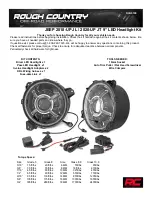
In any of these situations, we
strongly recommend that you install
the child seat directly behind the
front passenger’s seat, move the seat
as far forward as needed, and leave it
unoccupied. Or, you may wish to get
a smaller rear-facing child seat.
If the vehicle seat is too
far forward, or the child’s head is
thrown forward during a collision, an
inflating airbag can strike the child
with enough force to cause very
serious or fatal injuries.
We strongly recommend placing a
forward-facing child seat in a back
seat, not the front.
We also recommend that a small
child use the child seat until the child
reaches the weight or height limit
for the seat.
Of the different seats available, we
recommend those that have a five-
point harness system as shown.
Many states, Canadian provinces and
territories allow a child one year of
age or older who also meets the
minimum size and weight
requirements to transition from a
rear-facing child seat to a forward
facing seat. Know the requirements
where you are driving and follow the
child seat instructions. Many experts
recommend use of a rear-facing seat
up to age two, if the child’s height
and weight are appropriate for a
rear-facing seat.
Protecting Small Children
Child Seat Type
Placing a f orward-f acing child seat in
the f ront seat of a vehicle equipped
with a passenger’s airbag can be
hazardous.
Child Seat Placement
Protecting Infants and Small Children
44
Placing a rear-facing child seat
in the front seat can result in
serious injury or death during a
crash.
Always place a rear-facing child
seat in the back seat, not the
front.
10/09/02 13:47:18 31TM8610_049
Summary of Contents for 2011 Insight
Page 6: ...10 09 02 13 41 36 31TM8610_005 ...
Page 64: ...U S models Canadian models Safety Labels 58 DOORJAMBS 10 09 02 13 49 13 31TM8610_063 ...
Page 354: ...348 10 09 02 14 25 46 31TM8610_353 ...
Page 404: ...398 10 09 02 14 32 01 31TM8610_403 ...
Page 450: ...444 10 09 02 14 37 37 31TM8610_449 ...
















































